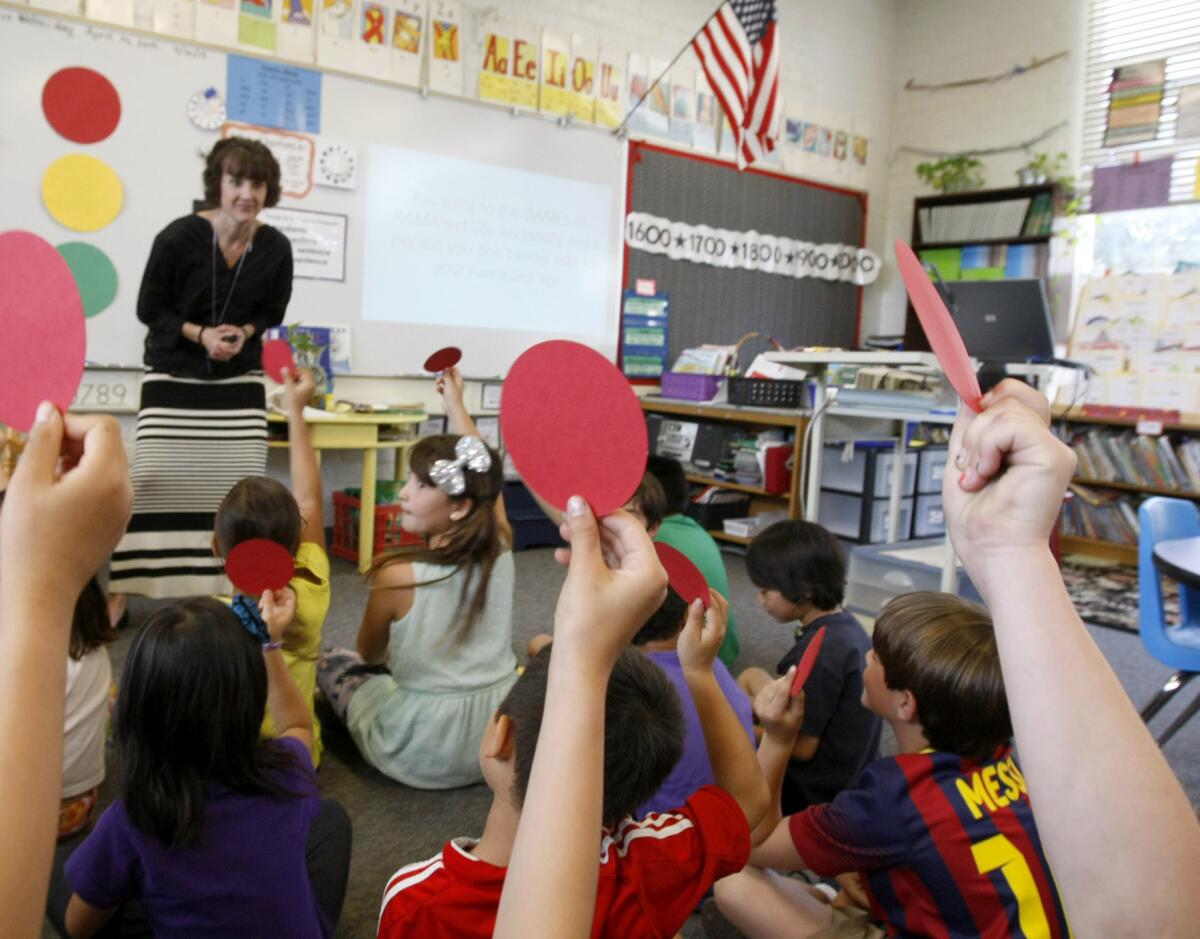Digital citizenship lesson plan: La Cañada students learn online safety

Do you know what to do when a message pops up on your computer asking if you want to chat? La Cañada Unified second-graders do.
“If they don’t give their name, you shouldn’t do it,” said Paradise Canyon Elementary School student Owen when the question was recently posed in his class.
“You should be careful giving your personal information to your friend on the Internet,” he continued, “because it could be someone else disguising their name.”
Many school districts want students to have access to computers or other technological devices during the school day, but not all have a plan for teaching kids to be safe and responsible in an online context.
As La Cañada Unified School District integrates more technology into the classroom, teachers and staff are introducing the concept of “digital citizenship,” an ethical standard that urges students to be aware of the responsibilities that go along with using technology.
“[The goal] is to make sure the kids know how to be safe and take care of each other,” says Jamie Lewsadder, the district’s IT director. “If we are going to put more devices in the classrooms, students need to have that responsibility.”
So technology teachers are conducting lessons and educating on-site educators how to discuss digital citizenship at each grade level. Last week, second-grade teacher Pam Watts led a special class for Owen and his classmates.
“We’re going to talk today about being safe when we use the computer,” she began.
Fun games and work sheets helped capture kids’ attention. To get them to differentiate among OK, questionable and potentially dangerous content, Watts encouraged the second-graders to think of a stoplight.
“We’re going to use this same sign for when you’re on the Internet,” she told the class. “Do you know what the colors mean?”
Green means a website is age-appropriate and safe to visit, she said, while red means the site may be meant for older kids or adults and they should not enter.
To navigate the murky territory in between, the kids played a game where they held up a red, yellow or green circle in response to different scenarios. Tiny debates sprung up between OK and caution, caution and danger, which Watts said is the whole point.
“They’re watching adults, so they’re seeing a lot of the technology used,” she said. “It’s really important we have these conversations. I think we have, at a basic level, a moral obligation.”
LCUSD’s digital citizenship lessons also teach students about their digital footprint, how to create secure passwords and protect themselves online while treating one another with respect, said Emily Blaney, a technology integrationist who helps create lesson plans.
“Digital citizenship is part of our technology standards — it’s being taught to everybody,” she said.
Watts said the idea is that parents and teachers keep the conversations going, paving a road for students to make responsible choices at home and in the classroom.
When it comes to safety, the lessons can’t come too soon.
“The whole main idea of this is trying to keep you safe — where?” Watts asked at the end of the lesson.
“On the Internet!” the class yelled back in unison.
--
This is the third in a series of articles about the integration of technology in today’s La Cañada classrooms. Read Part 1: Schools tap into tech with iPads and Part 2: La Cañada High tech club lets ‘students become the teachers’
Follow Sara Cardine on Twitter: @SaraCardine.
ALSO:
La Cañada History: Area physician picked a home with a beehive
